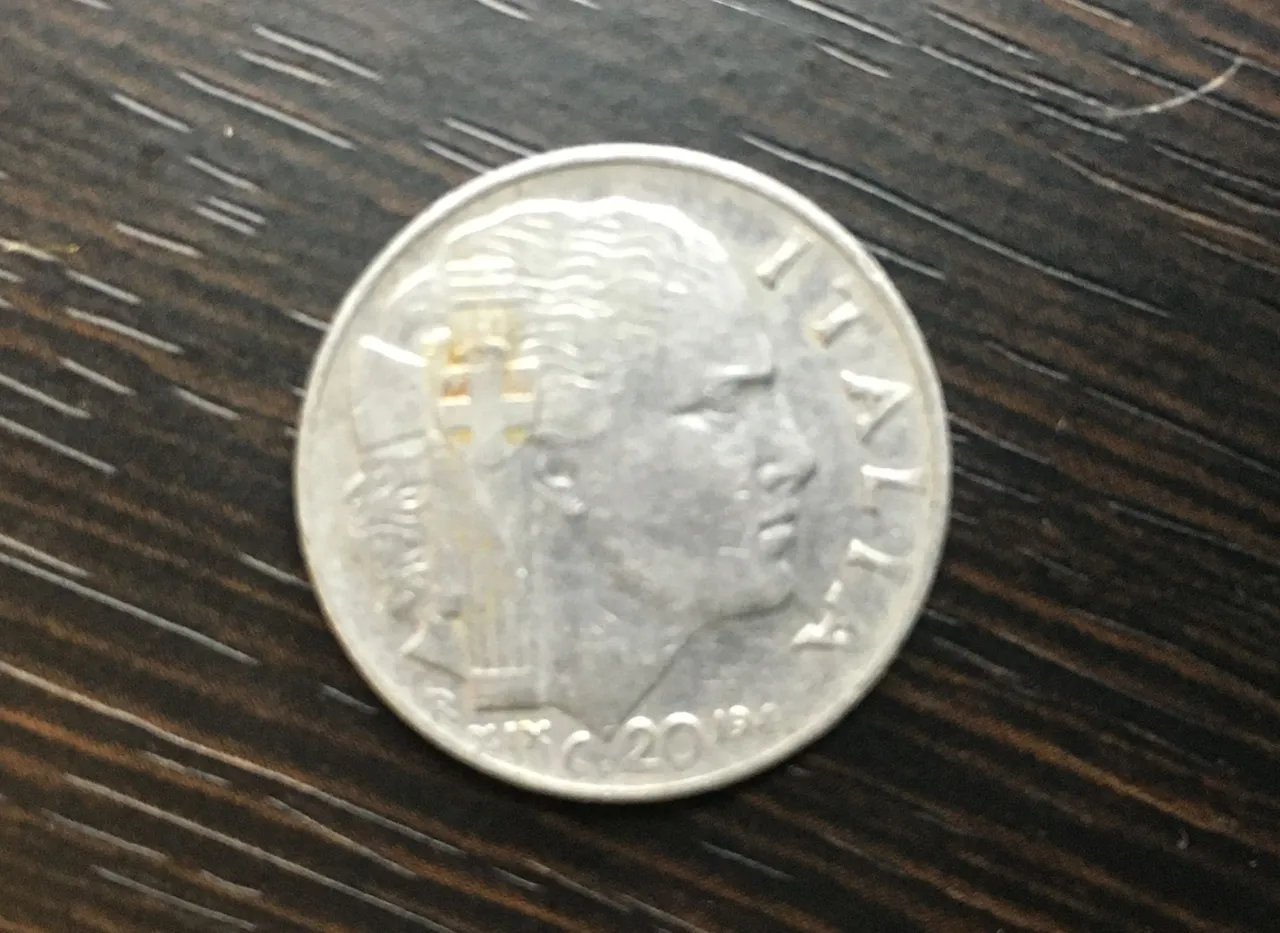
Привіт! Вже понад 20 років італійці користуються євро, а до цього часу в обігу перебували ліри й розмінні монети — чентизимо. Саме про таку й піде мова, а саме 20 чентизимо 1941 року.
Монета виготовлена з одного різновиду сталі — акмоніталу. В сплаві є нікель. Монета притягується до магніту. Це означає, що об'єм заліза перевищує 82%. Немагнітний акмонітал має 72% заліза. Вага монети 4 г, а розмір 21.7 мм. У 1941 році було виготовлено аж 97.3 мільйони. Звичайно, що невідомо, скільки монет збереглося до нашого часу, але 20 чентезимо досить поширена.
Частину 20 чентизимо було виготовлено в Римі, іншу — в муніципалітеті Аоста. Але на усіх виробах присутній символ R (зліва унизу). Тому визначити й розрізнити, де які монети були виготовлені, практично неможливо.
Виготовлялась монета цього зразка короткий проміжок часу — з 1939 по 1943 рік за правління Віктора Емануїла 3.
Реверс. Центральну частину займає зображення голови жінки. На її волосі можна побачити символічне зображення щита та сокира. Зліва внизу викарбувано лого монетного двору, ще нижче вправо — номінал (С 20). Правіше від номіналу нанесено рік виготовлення монети.

Лицьова сторона. В центрі виробу нанесено профіль короля Італії. По колу викарбувано його ім'я та вказано статус. Написи зроблено латиницею. По колу, а саме, в нижній частині можна побачити ім'я гравера монети. Цей напис зроблено дрібним шрифтом. Виріб має рифлений гурт.
Гарного дня!
20 chentesimo, 1941: coins of the world. Italy
Hello! Italians have been using the euro for more than 20 years, and until that time lira and centizimos were in circulation. It will be about this one, namely, 20 centizimo of 1941.
The coin is made of one type of steel — acmonital. The alloy contains nickel. A coin is attracted to a magnet. This means that the volume of iron exceeds 82%. Non-magnetic acmonital has 72% iron. The weight of the coin is 4 g, and the size is 21.7 mm. In 1941, as many as 97.3 million were produced. Of course, it is not known how many coins have survived to our time, but 20 chentesimo is quite common.
A part of the 20 centizimo was made in Rome, the other in the municipality of Aosta. But all products have the R symbol (bottom left). Therefore, it is almost impossible to determine and distinguish where and which coins were produced.
A coin of this type was produced for a short period of time - from 1939 to 1943 during the reign of Viktor Emanuel 3.
Reverse. The central part is occupied by the image of a woman's head. A symbolic image of a shield and an ax can be seen on her hair. The logo of the mint is engraved at the bottom left, and the denomination (C 20) is engraved even lower to the right. To the right of the face value is the year the coin was made.
Front side. In the center of the product is the profile of the king of Italy. His name and status are engraved around the circle. The inscriptions are made in Latin. In the circle, namely, in the lower part, you can see the name of the engraver of the coin. This inscription is made in small font. The product has a ribbed band.
Good day!